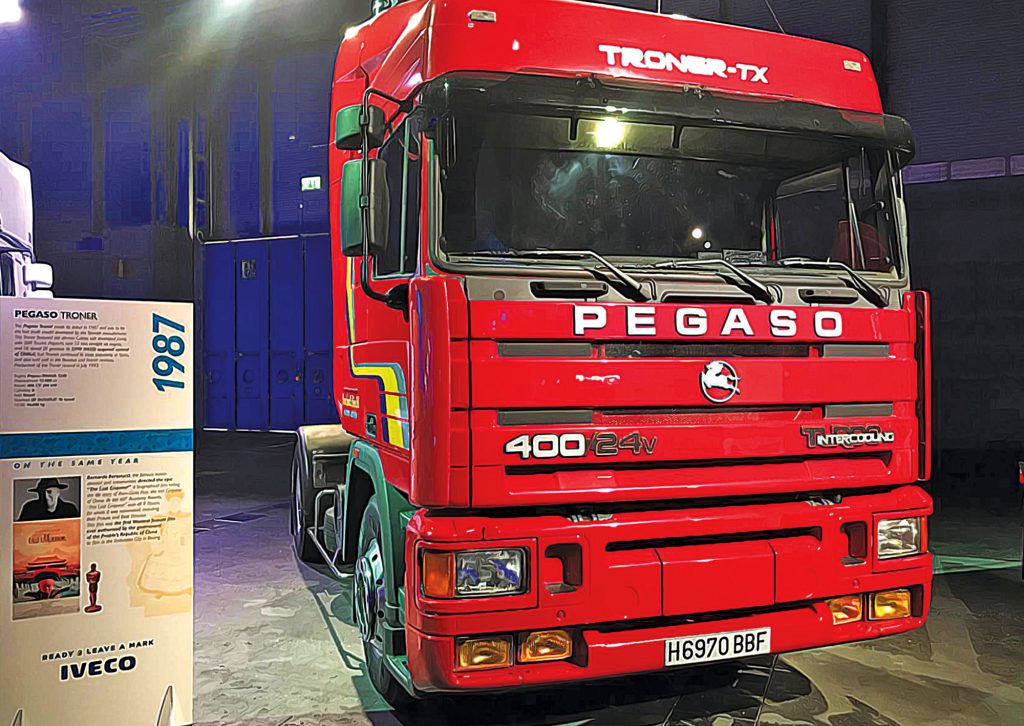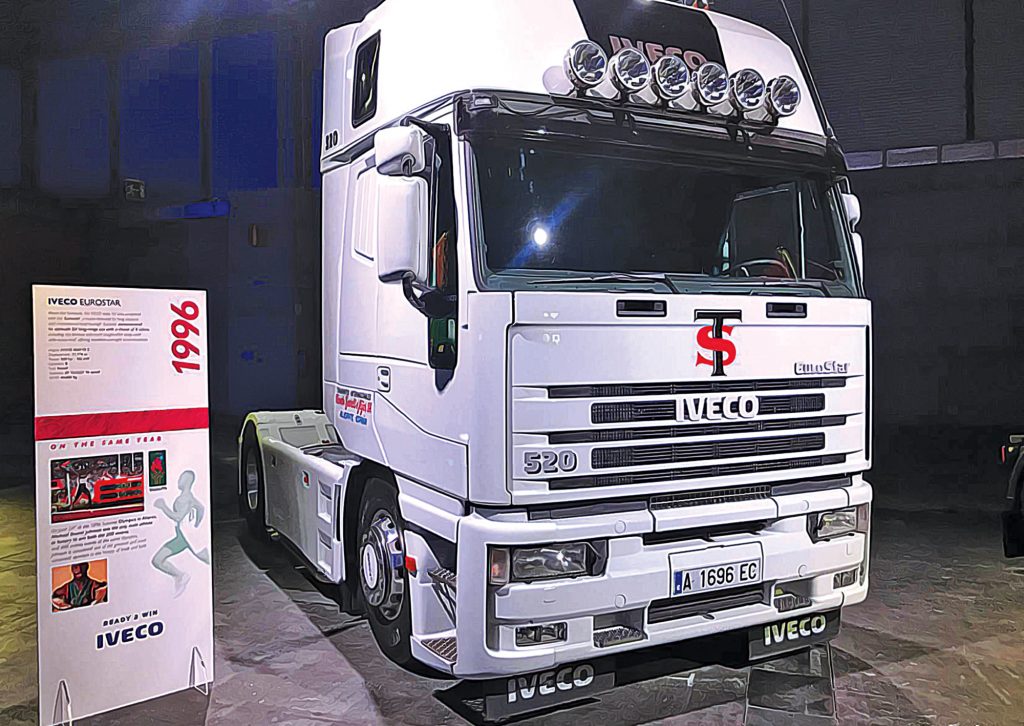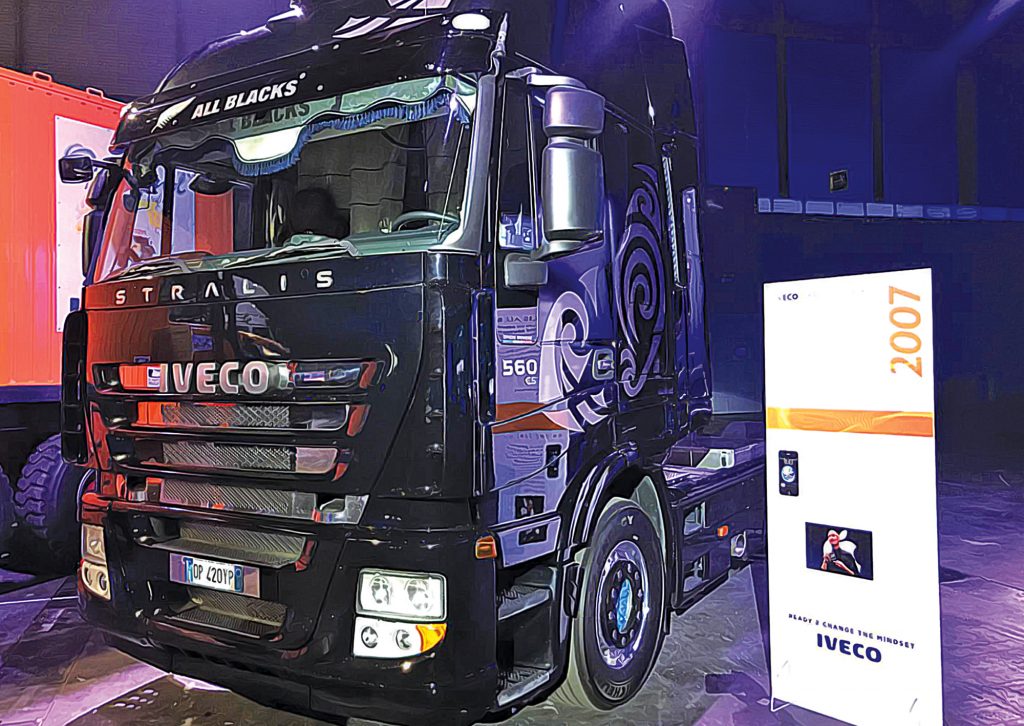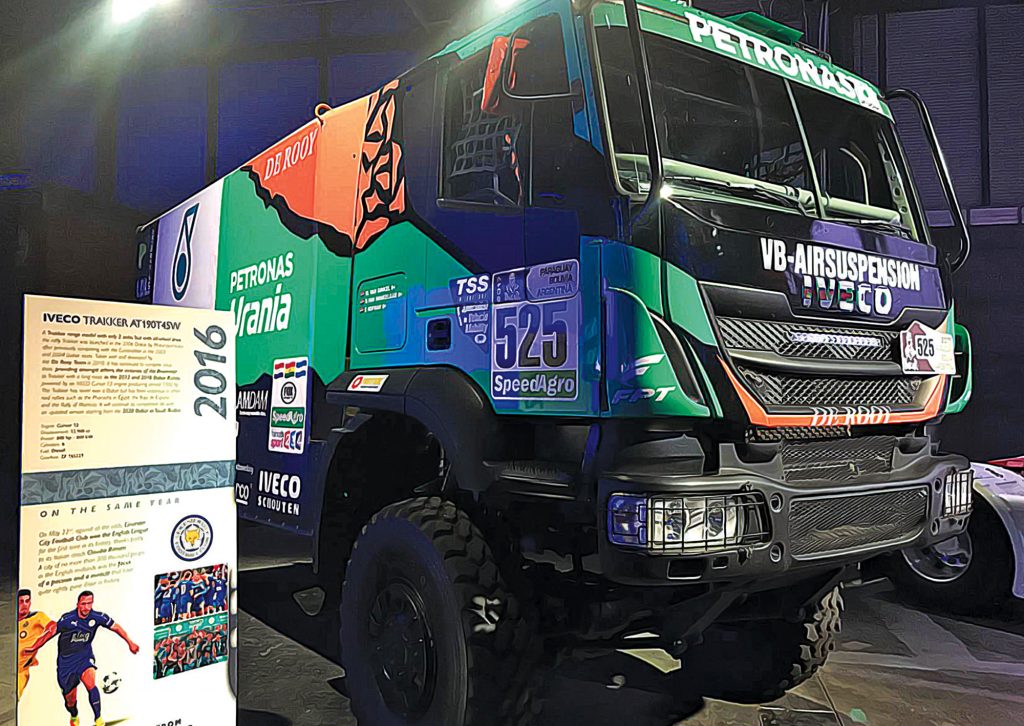Iveco through the decades
Iveco through the decades
Since its formation in 1975, Iveco has established itself among the big brands in the commercial vehicle industry. Fleet Transport’s JARLATH SWEENEY reports that the S-Way is the latest in a long line of incredible Iveco trucks
Currently a brand of CNH Industrial – a world leader in capital goods listed on the New York Stock Exchange and on the Mercato Telematico Azionario of the Borsa Italiana – Iveco employs close to 21 000 individuals globally. It manages production sites in seven countries throughout Europe, Asia, Africa, Oceania and Latin America where it produces vehicles featuring the latest advanced technologies.
A total of 4 200 sales and service outlets in over 160 countries guarantee technical support wherever an Iveco vehicle is at work. Many may not know, however, that Iveco was formed following a number of mergers and acquisitions of European truck brands such as Fiat, Lancia, OM, Magirus, Pegaso and Ford Europe. At the launch of the S-WAY, the latest model from the Italian brand, an interesting line-up of the timeline was presented, as follows:

Lancia Esatau 864 – 1953
Produced from 1947, it was the first version of the model and still had a recessed cabin. The Esatau “musone”, or “long nose”, incorporated some typical Lancia style features, such as the chrome shield frontal grille, and was far ahead of the competition in terms of fuel consumption with less than 20 litres of diesel per 100 km, considering a payload of over 7 500 kg.
Engine
Lancia: 864M
Displacement
Power
122 hp (90 kW)
Cylinders
6
Fuel
Diesel
Gearbox
4 speed + reverse and reductor
Speed
122 hp (90 kW)
Weight
18 000 kg

OM Super Orione – 1960
In the aftermath of the Second World War, OM launched Orione, its first heavy truck with advanced cab, which was quick to achieve success thanks to a reliable, economical engine.
The Super Orione version, launched in the 4×2 and 6x2x2 versions, was equipped with an engine with volumetric compressor and was used as the basis for special machinery for airports and exceptional transport.
Engine
OM CH2D
Displacement
11 630 cc
Power
180 hp (132 kW)
Cylinders
8
Fuel
Diesel
Gearbox
4 speed + reverse and reductor
Speed
62 km/h
Weight
14 000 kg

Magirus Deutz 230 – 1970
The mighty 230 “Eckhauber” or “the king of the late sixties” was the undisputed sovereign of German construction sites since the early fifties. It all started with the air-cooled F8 L614-V8 engine of 170 hp (125 kW) and the typical angular front with freestanding fenders and a separate windscreen.
Some minor modifications provided the crowning glory of the eight-cylinder “Eckhauber” series, with the powerful
230 hp (171,5 kW) engine. Due to its reliability and underlying ruggedness, this truck turned in unique performances on any terrain and was the favourite for use in gravel pits and quarries, as well as on construction sites where the highest possible towing capacity was a priority.
Engine
Air-cooled F8 L614-V8
Power
170 hp (125 kW)
Cylinders
8
Fuel
Diesel
Weight
16 000 kg

Fiat/Iveco 190.38 Special – 1982
The 190.38 Special, also known as “190 cowboys”, enjoys unique, timeless iconic status. So great was its success, that in 1984 Iveco marketed a kit for the 190.38 called “California”. Presented in 1981, with a powerful 17 174 cc engine supercharged by two turbines, and power of 381 hp (280 kW), the only colour available was lobster red.
It was distinguished from the standard model by the upper spoiler, with a lit central panel with the Iveco name, a spoiler with four circular lights, two fog lights and two depth lights, as well as a chromed step under the front bumper. But the most eye-catching features were the two American truck-style chrome vertical exhausts, the chrome-plated side door handle, as well as chrome trim and black slats.
Engine
Iveco 8280.22
Displacement
17 174 cc
Power
381 hp (280 kW)
Cylinders
8
Fuel
Diesel
Gearbox
Fuller 12513 13 speed – ZF16S160 16 speed
GCW
44 000 kg

Iveco TurboStar – 1984
In 1984, a spectacular presentation was given at Taormina for the new TurboStar, the heir of the previous Iveco Turbo series, and a model that was to become very popular throughout Europe. This was a heavy long-distance model with a redesigned chassis and a comfortably appointed cab.
It was originally sold in a six-cylinder option, the 19.33, but at the end of the 1980s the 420 hp (313,1 kW) V8 was uprated to become the 190.48; the most powerful “T-range” model. With more than 50 000 units being produced, it was one of the best-selling Iveco trucks.
Engine
Iveco 8280.42
Displacement
17 174 cc
Power
480 hp (353 kW)
Cylinders
8
Fuel
Diesel
Gearbox
ZF EcoSplit 16 speed
GCW
44 000 kg

Pegaso Troner – 1987
The Pegaso Troner made its debut in 1987 and was to be the last truck model developed by the Spanish manufacturer. The Troner featured the all-new Cabtec cab developed jointly with DAF Trucks, Pegaso’s own 12-litre straight-six engine, and 16-speed ZF gearbox. In 1990, Iveco acquired control of Enasa, but Troners continued to enjoy popularity in Spain, and also sold well in the Benelux and French markets. Production of the Troner ceased in July 1993.
Engine
Pegaso/Enasa 1240
Displacement
12 000 cc
Power
400 hp (294 kW)
Cylinders
6
Fuel
Diesel
Gearbox
ZF EcoSplit 16 speed
GCW
44 000 kg

Fiat Veicoli Industriali (VI) 682 N3 – 1952 to 1988
This was the first real truck and tractor for versatile semi-trailers produced by Fiat VI, starting from 1952 and produced until 1988. The 682 N2 was launched in 1954. It was the first truck equipped with the Fiat 203 engine evolved from the “125”, an extremely rugged, reliable engine that was the secret of the model’s success. With the N2, the rounded cab (known as the “moustache cab” because of the chrome-plated whisker that decorated the front) also appeared for the first time. From 1967, production continued in Italy and in several African States without many major updates.
Engine
Fiat VI
Displacement
11 548 cc
Power
177 hp (130 kW)
Cylinders
6
Fuel
Diesel
Gearbox
8 speed + reverse
Speed
70 km/h
Weight
14 000 kg

Magirus Overland ANW – 1995
Chosen in 1995 for the first of many overland expeditions, the model is the final evolution of the famous “long-nose” truck that shaped the history of the brand from the 1970s to the 1990s.
This Arctic version was chosen for its proverbial mechanical sturdiness and simplicity and has an air-cooled Deutz engine. This was the best configuration to face the rigours of the Siberian winter covered by the route of the Rome-Moscow-Bering-Strait-New York expedition from November 1995 to April 1996.
The four overland trucks took part in more than 15 years of extreme expeditions (1995 to 2010) and travelled over 400 000 km around four of the earth’s continents, making them true adventure legends.
Engine
Deutz BF8L513
Displacement
12 800 cc
Power
306 hp (225 kW)
Cylinders
8V
Fuel
Diesel
Gearbox
ZF 4S/120GP 8+8
GCW
33 000 kg

Iveco EuroStar – 1996
Above the EuroTech, the Iveco sales list was completed with the EuroStar, a model intended for long-distance and international road haulage. The EuroStar demonstrated its aptitude for long-range use with a choice of four cabins, including the famous and much sought-after deep cabin with a raised roof offering excellent overnight accommodation.
Engine
Iveco 8280.42 S
Displacement
17 174 cc
Power
520 hp (352 kW)
Cylinders
8
Fuel
Diesel
Gearbox
ZF 162S221 16-speed
GCW
44 000 kg

Iveco Stralis All Blacks – 2007
Launched in 2007, the new Stralis was supported by an investment in marketing and advertising that had never been seen in Iveco’s history. It included TV commercials during the Formula 1 GP.
In the wake of a sponsorship agreement with the New Zealand All Blacks, the Stralis and All Blacks Road Show travelled right across Europe. A total of 100 Stralis trucks travelled throughout Europe on tour for more than 200 days.
The vehicle featured the Cursor Euro-5 SCR engine and three types of cab for specific mission categories: Active Space was the top of the range for cab comfort.
Engine
Cursor 13
Displacement
12 900 cc
Power
560 hp (412 kW)
Cylinders
6
Fuel
Diesel
Gearbox
Automatic Allison/Automated ZF
GCW
44 000 kg

Iveco Trakker AT190T45W – 2016
A Trakker range model with only two axles, but with all-wheel drive, the rally Trakker was launched in the 2006 Dakar by Motorsport Italia after previously competing with the Eurotrakker in the 2003 and 2004 Dakar races.
Taken over and developed by the De Rooy Team in 2010, it has continued to compete, providing the victories of the Powerstar (a Trakker with a long nose) in the 2012 and 2016 Dakar Rallies. It is powered by an Iveco Cursor 13 engine producing almost 1 000 hp (748 kW).
The Trakker has never won a Dakar, but has been victorious in other rallies such as the Pharaohs in Egypt, the Baja de España and the Rally of Morocco. It will continue its competitive life with an updated version starting from the 2020 Dakar in Saudi Arabia.
Engine
Cursor 13
Displacement
12 900 cc
Power
840 hp (600 kW)
Cylinders
6
Fuel
Diesel
Gearbox
ZF 16S221

Iveco Stralis NP 460 – 2017
The new Stralis NP 460, which was launched in 2017, is the only full range of natural gas heavy trucks with the latest-generation automated transmission. With 460 hp (338 kW), the new Stralis NP centres the sweet spot of the long-haul market in the tractor and rigid segments with a full range that spans low tractor, swap bodies, super-light tractor and, with the X-Way NP, construction logistics.
The vehicle can run on compressed natural gas (CNG), combined CNG and liquefied natural gas (LNG), or pure LNG. The double LNG tank version ensures the record range autonomy of up to 1 600 km.
Engine
Cursor 13
Displacement
12 900 cc
Power
460 hp (338 kW)
Cylinders
6
Fuel
LNG/CNG
Gearbox
HI-Tronix 12 speed automated
Published by
Focus on Transport
focusmagsa




